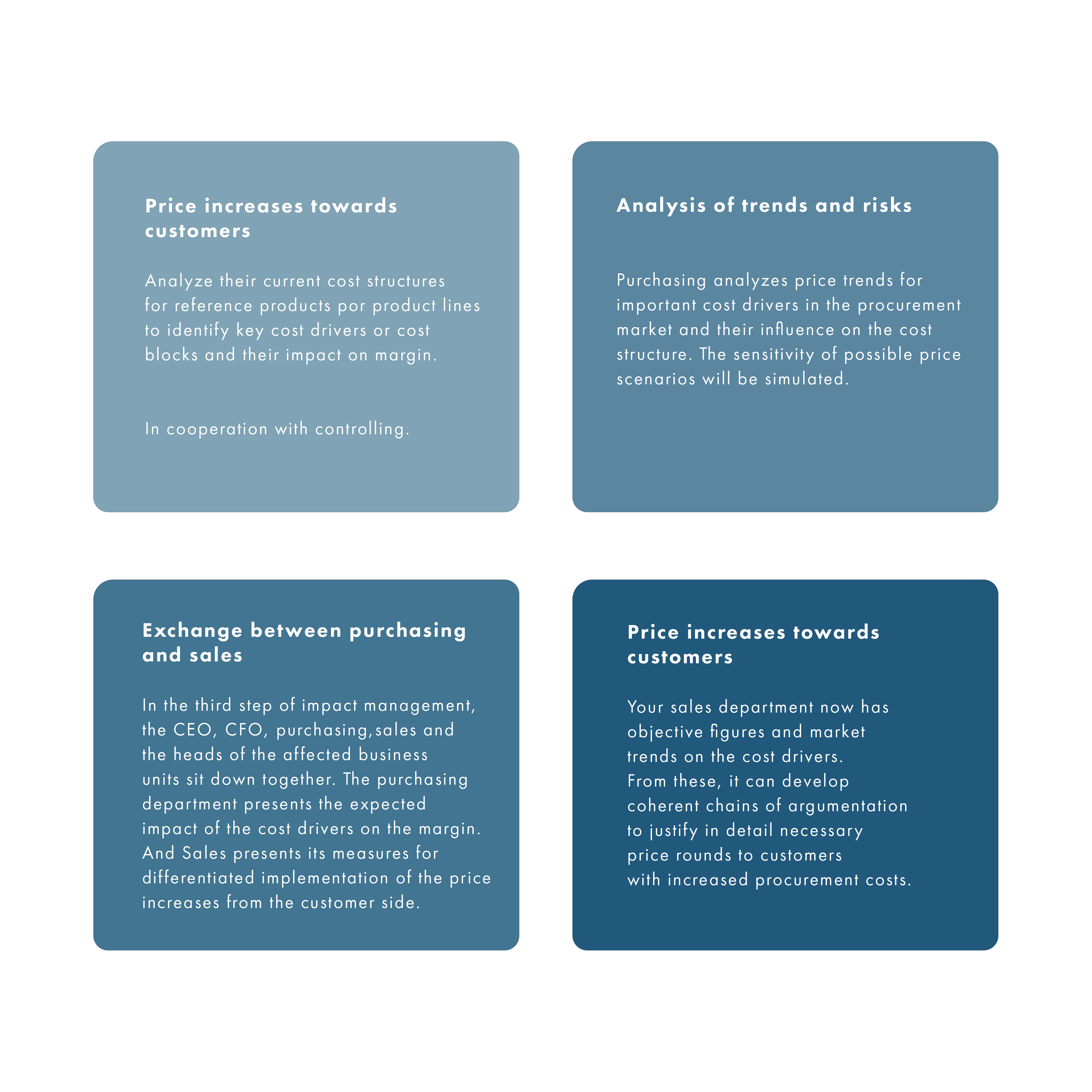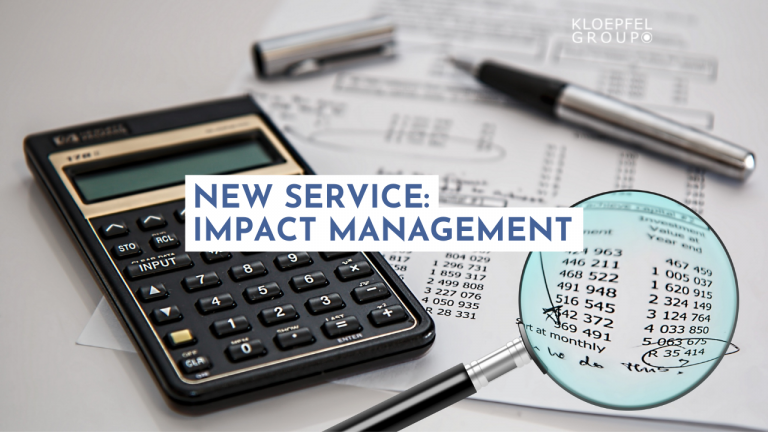“Passing on price increases to customers”
Currently, companies are running out of costs. In view of commodity price inflation and the energy price shock, there is an urgent need for action on the sales side to defend margins and survive the coming years with increased inflation unscathed. To do this, the trends for the cost drivers need to be assessed once a quarter with a time horizon of six to twelve months. The problem is often that medium-sized companies lack the time in purchasing and the transparency in the procurement markets to do this. Similarly, cross-functional processes and methodical approaches are not well established.
Making cost structures transparent
Impact management can help to defend one’s own margin by making the cost drivers for product lines or important cost units transparent to controlling and by purchasing analyzing the trends for these cost drivers in the relevant procurement markets. The decisive questions: How do the prices of critical raw materials and energy sources develop? But also, how are prices developing for indirect procurement issues such as transport and packaging costs? And how do these trends affect the cost structures of key products in the company? For this purpose, the raw material cost share in the company’s own products as well as in purchased primary products would have to be known.
For a production line, the expected price development for the two or three most important raw materials is made transparent. The same applies to non-production materials such as energy, transportation, and possibly temporary labor. In this way, trends can be estimated and levers of price changes can be better weighted, and price increases can be validly justified to customers.
The early bird catches the worm
The analysis of trends for the most important cost drivers should be carried out on a quarterly basis with a perspective of six to twelve months. The sooner the trends for cost drivers are identified, the sooner sales can react, initiate necessary price rounds with customers and protect margins. In a volatile price environment, cost scenarios are recommended, depending on specific influencing factors.
Analyses by purchasing
Purchasing consultants recommend creating so-called trend sheets for important raw materials. The historical and future price development is shown. The influencing factors are outlined. Quantified effects on procurement costs illustrate the relevance.
Cross-functional coordination
In the second step of impact management, the CEO, CFO, purchasing, sales and the heads of the affected business units sit down together. Here, purchasing presents the cost structures in order to support sales with arguments for further price rounds. Sales can present its measures for implementing the price increases.
Implementation support
To implement impact management, Kloepfel Consulting has developed various methodological approaches based on its knowledge of the commodity markets to identify price drivers and develop scenarios that show their influence on cost structures. In addition, the specialists can prepare documents for the sales department so that it can justify price adjustments to its customers.
Conclusion: Impact Management supports SMEs in the inflationary environment with methodical approaches and good knowledge of the procurement markets to survive the coming years unscathed.

Contact
Kloepfel Group
Christopher Willson
Tel.: 0211 941 984 33
Pempelforter Str. 50
40211 Duesseldorf
Mail: rendite@kloepfel-consulting.com
